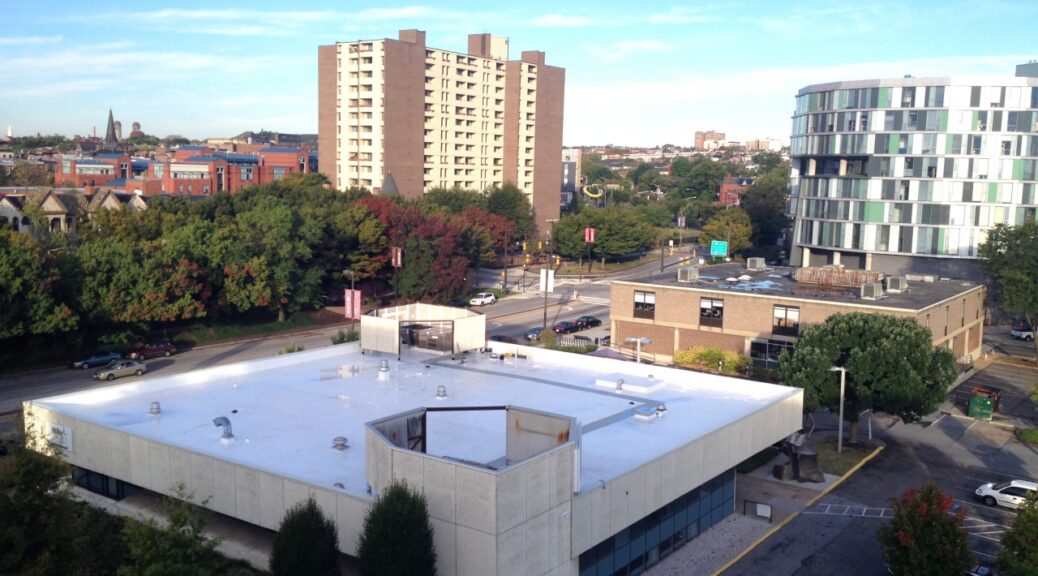Deciding on the type of commercial roof for your building matters—whether you’re building a new commercial property or replacing the roof on an existing building. You want to make sure you have the best type of roofing material for the business being conducted inside. One type of roofing material to consider is thermoplastic polyolefin (TPO), which—like all types of roofing—comes with its share of benefits and disadvantages.
When weighing TPO roofing’s pros and cons, it’s essential to ensure you’re getting your information from a trusted roofing contractor. For over 60 years, Heidler Roofing has been helping business owners like you repair and replace the roofs on their commercial buildings. We understand that your roof is a sizeable investment that you want to last for years and protect the contents of your building from things like water damage, weather, and insect infestation.
In today’s blog post, we will examine the advantages and disadvantages of TPO roofing systems and whether they’re suitable for your business. If you decide that TPO is the best option for your commercial property—or even decide on another type of roofing we offer—the roofing professionals at Heidler Roofing can provide you with a an estimate on your roofing installation, repair, or replacement.
Is TPO Good Roofing?
Before we get into TPO roofing’s pros and cons, it’s helpful to know a little bit more about this product. TPO is a thermoplastic, single-ply membrane roofing product. This material naturally expands and contracts with temperature changes and usually has a white and reflective appearance. It typically comes in large rolls and is adhered or mechanically attached to the substrate with heat to weld the seams and make them waterproof.
TPO is a good roofing material for flat roofing projects and for buildings that discharge oil and fat through the ventilation system—which is typically on the roof. TPO roofing represents the largest commercial roofing segment for good reasons. However, TPO is a newer technology and doesn’t have the long-term track record that some other roofing materials have.
What Are the Advantages of TPO Roofing?
TPO roofing has soared in popularity due to its many advantages compared to other types of roofing materials. Since each building is unique in shape, design, and use, there’s no blanket answer about whether TPO is the best roofing material. However, the type of roof you choose for your building is ultimately a personal choice and one that you should make with advice from professional roofing contractors.
1. Energy Efficiency

One of the reasons many building owners choose TPO roofing is its high energy efficiency. Because it’s UV resistant and can withstand higher temperatures, the heat from the sun is reflected into the atmosphere rather than absorbed into your building. These reflective properties mean that it’s more cost-effective to cool your facility in the hot summer months.
2. Strength and Durability
Another pro of TPO roofing is that it’s less prone to mold growth and dirt accumulation. Compared to ethylene propylene diene monomer—or EPDM rubber roofing—it’s more impact resistant from falling debris and more puncture-resistant to foot traffic. It’s also highly durable and can last for 30 or more years when properly maintained.
3. Ease of Installation
TPO roofing is also reasonably easy to install as it comes in large rolls. These rolls are laid out on the roof deck and then hot-air welded at the seams to waterproof the roof. It can also be more cost-effective than its thermoplastic sister, PVC.
4. Color Options
Another pro of TPO roofs is that there are several color options. TPO often comes in white. However, some roofing-product manufacturers are offering a few other colors. For example, Carlisle Syntec Systems offers seven different colors—ranging from a standard tan to a medium bronze.
What Are the Cons of TPO Roofs?
Now that you know some of the advantages let’s look at some of the cons of TPO roofs. While these disadvantages shouldn’t necessarily deter you from choosing TPO for your flat roof, you need to be aware of some of the issues with the material before committing to it.
1. May Need Leak Repair
While TPO roofing is solid and durable, it’s not infallible. After years of wear and tear, it may need leak repair—which is why it’s so essential for you to have routine roof inspections by a professional roofing contractor. Still, it’s easy to revitalize a TPO roof with a unique flat roof coating material to restore it to leak-proof condition.
2. A Professional Roofer Must Install It
TPO is a relatively easy material to install on a roof. However, a professional roofer must install it. This project is not one you can DIY to save some money. They use the best materials in the industry and have the proper training to ensure the roof system is properly installed.
3. Dangerous Winter Conditions
If you live in an area where snow and ice are a concern during the colder months, TPO could pose a dangerous situation. Frozen precipitation takes longer to melt on a TPO roof, essentially making your roof a large skating rink. Be sure to use caution if you have a TPO roof and need to check it for damage after a winter storm.
Talk to the Experts about TPO Roofing’s Pros and Cons!
When it comes to TPO roofing’s pros and cons, there’s no better place to go than the experts at Heidler Roofing! We want to help you make the right roofing choice for your building because we know this long-term investment is one that you want to be durable, long-lasting, and energy-efficient. While TPO does have some disadvantages, don’t discount its benefits.
Get expert advice on your roofing project from the pros who care about keeping your building watertight and completing their work on time and professionally. Schedule your roofing estimate with Heidler Roofing today!


